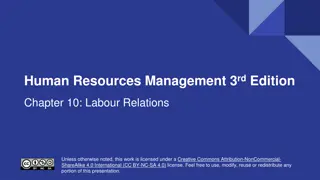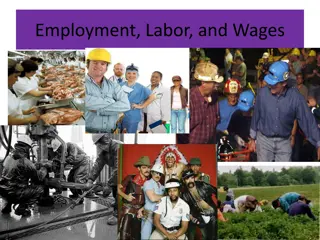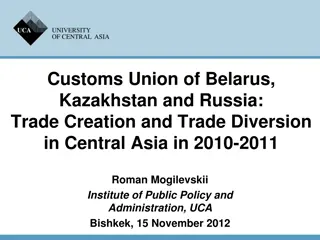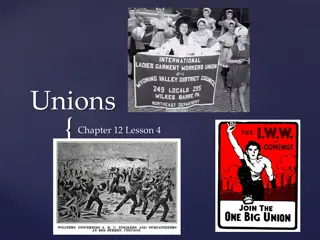Understanding the Dynamics of Trade Unions: Features, Importance, Advantages, Disadvantages
Trade unions are organizations formed by workers to protect their rights and negotiate with employers for better working conditions, wages, and job security. They play a crucial role in advocating for fair treatment, job security, and improved workplace conditions. While trade unions offer advantages such as enhanced workplace conditions and negotiation power, they also face challenges like conflicts with management and membership fees. Collective bargaining and promoting workplace safety are key aspects of trade union involvement, along with protecting employee rights and addressing challenges brought by changing labor laws and globalization.
Download Presentation

Please find below an Image/Link to download the presentation.
The content on the website is provided AS IS for your information and personal use only. It may not be sold, licensed, or shared on other websites without obtaining consent from the author. Download presentation by click this link. If you encounter any issues during the download, it is possible that the publisher has removed the file from their server.
E N D
Presentation Transcript
The Dynamics of Trade Unions: *Exploring Features *Importance *Advantages *Disadvantages
What are Trade Unions? Trade unions are organizations formed by workers to protect their rights and interests in the workplace. They negotiate with employers on behalf of the members to improve working conditions and wages. Trade Unions ?
Importance of Trade Unions Trade unions play a crucial role in ensuring fair treatment, promoting job security, and advocating for better wages and working conditions for employees.
Advantages of Trade Unions The presence of trade unions can lead to improved workplace conditions, enhanced job security, and better negotiation power for employees.
Disadvantages of Trade Unions Challenges associated with trade unions include potential for conflict with management, strike actions impacting productivity, and membership fees.
Collective Bargaining Collective bargaining is the negotiation process between trade unions and employers to reach agreements on issues such as wages, working hours, and working conditions.
Role of Trade Unions in Workplace Safety Trade unions play a vital role in ensuring safe working environments by advocating for proper safety measures and representing workers in discussions with employers.
Trade Unions and Employee Rights Trade unions are instrumental in protecting employee rights, including the right to fair treatment,non-discrimination, and representation in disciplinary actions.
Challenges Faced by Trade Unions Trade unions encounter challenges such as declining membership, changing labor laws,and globalization impacting traditional labor practices.
The Future of Trade Unions The future of trade unions lies in adapting to changing workplace dynamics, embracing technology,and expanding their influence in emerging industries.























